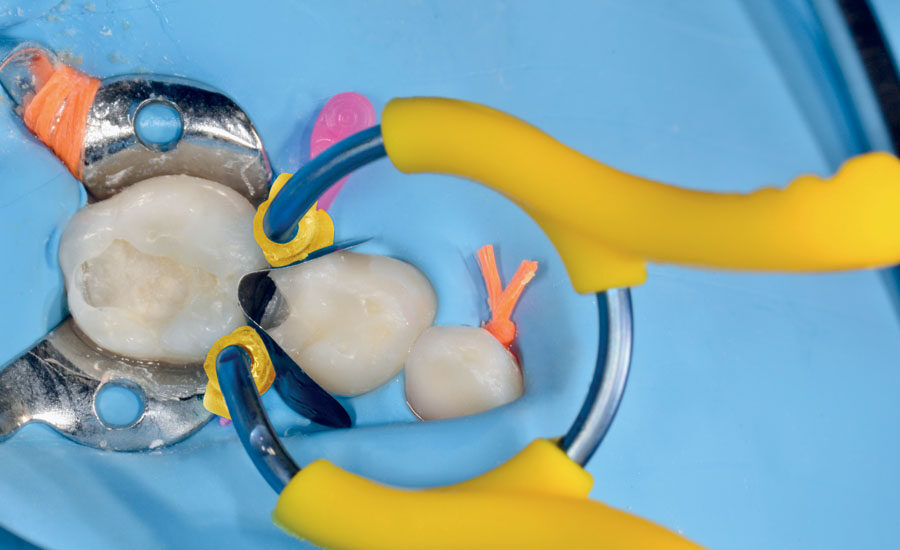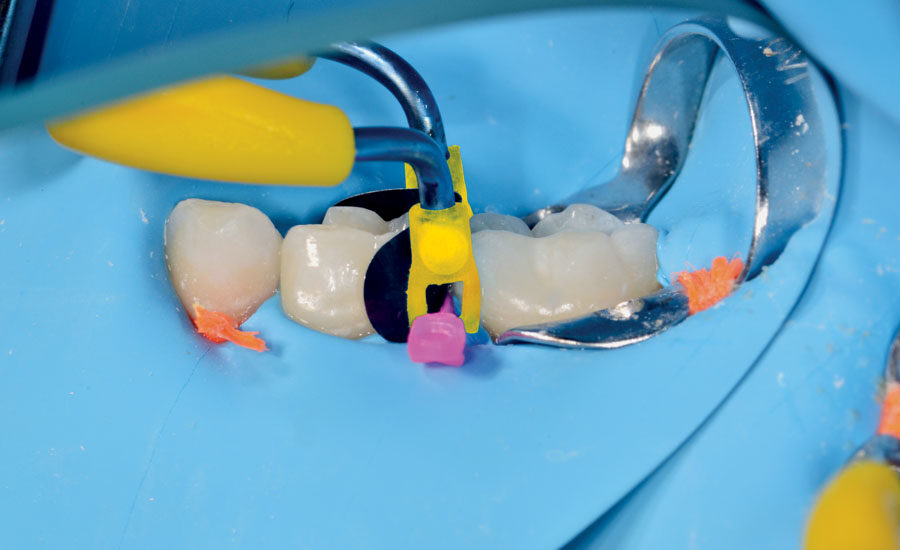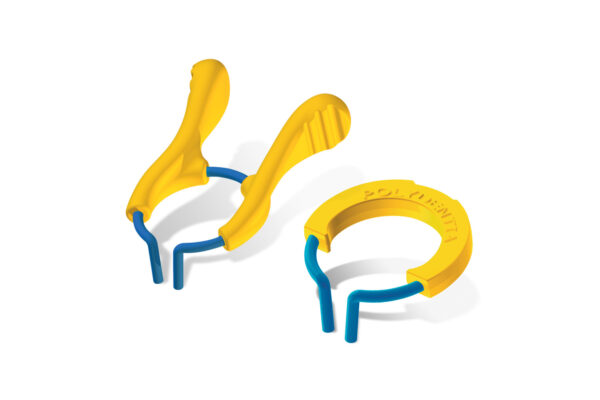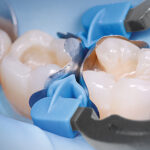25 Mar Class II restoration of a primary molar – myClip Junior – Dr. Marina Papachroni
Class II restoration of a primary molar with myClip Junior
by Dr. Marina Papachroni

Dr. Marina Papachroni
Marina Papachroni graduated in 1995 from dental school at the University of Athens. She completed a three-year post-graduate program where received her pediatric dentistry specialization certificate in 1999 and a two-year master’s degree in dental materials in 2001 from the same university. Thereafter, she has attended numerous congresses, courses and continuing education programs. She is the Treasurer of the Board of the Hellenic Academy of Clinical Dentistry and a member of the Hellenic Society of Pediatric Dentistry, European Academy of Pediatric Dentistry and International Association of Pediatric Dentistry. Lately, she is lecturing on Bioactive Materials, Restorative Pediatric Dentistry and Pulp Therapy of Primary teeth. The current focus of the clinical research is Bioactive Restorative Materials. Dr. Papachroni runs her private practice in Patras, Greece, with emphasis on aesthetic and microscopic pediatric dentistry.
caso clinico
The young patient came to our attention for a periodic control. The preliminary analysis revealed a class II carious lesion on molar 84, distal and a class I carious lesion on molar 85.
Because of the reduced crown height, we decided to improve the ring stability using the myClip Junior in combination with the provided extremities myTines Junior and proceed with a direct composite restoration of the occlusal and distal interproximal morphologies.
The following images shows the step-by-step restoration procedure using Polydentia myJunior kit.

1: Pre-operative situation showing a class I carious lesions on primary molar 85 and a class II on 84.

2: The view after rubber dam isolation.

3: The clinical situation after the preparation of the cavity, cleaned with air abrasion and disinfected.

4: Primary molar 84 equipped with myClip Junior ring, LumiContrast matrix and myWedge. myClip Junior in combination with myTines Junior and myWedge provides a reliable and stable solution for the restoration of small primary teeth. A common problem when dealing with primary dentitions is the difficulty to completely insert a wedge because of the small cervical spaces. The hollow V-shape of the myWedges allow them to compress, allowing an easy placement and improved matrix adaption to the cervical walls.

5: Labial view of the clinical situation; the geometry of the myTines Junior carefully embraces the wedge preventing the spring off effect of the ring even in case of younger patient with very low dental crown height.

6: Enamel margins have been etched using a standard 35% phosphoric acid solution.

7: Both cavities were filled with composite resin. We then modelled the occlusal surfaces, and light cured the filling material.

8: myClip Junior, myWedge and LumiContrast matrix were removed before proceeding with finishing and polishing procedures.

9: Final image of the restoration immediately after rubber dam removal
conclusione
MyClip Junior ring is designed especially for primary and young permanent teeth. Its accurate adaptation to the interproximal areas simplifies the finishing procedures. In case of younger patients, the extremities myTines Junior make the ring more stable and easier to adapt, preventing the spring off effect.
Also, it is obvious that with myClip Junior ring we got better contact points. I regard myClip Junior as an optimal solution for paediatric treatments. It allowed me to achieve an ideal restoration with less efforts and with considerable chair-time savings.
altri casi clinici
-
Cavità adiacenti di classe II su 1° e 2° molare – QuickmatFIT matrici sezionali anatomiche e myRing Forte – Dr David Gerdolle
Una paziente di sesso femminile di 28 anni, senza patologie generali, ha presentato una lesione cariosa che interessava entrambi i molari 46D e 47M. Il caso seguente mostra il restauro diretto in composito della lesione utilizzando le matrici sezionali anatomiche Polydentia QuickmatFIT in combinazione con myRing Forte e i cunei in plastica a forma di V myWedge....
-
Class II restoration of a primary molar – myClip Junior – Dr. Marina Papachroni
The following images shows the step-by-step restoration procedure using Polydentia myJunior kit....
-
Diamond24, 24 soluzioni per i vostri restauri di cavità di II classe
Diamond24 e myRing Classico: 24 soluzioni per i vostri restauri di classe II. Leggete l'articolo scritto dal Dr Chiodera (in inglese), che spiega come ottenere ottimi punti di contatto con Diamond24 e myRing Classico per i restauri di cavità di Classe II. ...
-
Dr. Chiodera – Ricostruzione di classe II sul secondo premolare – myQuickmat Forte kit
Il kit Polydentia myQuickmat Forte è un sistema molto efficace per le ricostruzioni posteriori di classe II....
-
Dr. Chiodera – Ricostruzione MOD sul primo molare – myQuickmat Classico kit
Il kit Polydentia myQuickmat Classico è un sistema molto efficace per le ricostruzioni posteriori di classe II....
-
Dr. Gerdolle – Classe II mesiale, distale e MOD – MyClip 2.0 + LumiContrast
Il caso mostra la ricostruzione diretta con composito delle lesioni usando il sistema di matrici sezionali Polydentia myClip 2.0, LumiContrast e cunei in legno....
-
Dr. Gerdolle – Classe II MO sul primo molare – myClip 2.0
Il caso mostra la ricostruzione diretta con composito della lesione usando il sistema sezionale Polydentia myClip 2.0, le matrici sezionali LumiContrast e cunei in legno....
-
Dr. Giuseppe Chiodera – Replacement of old Amalgams – myRing Classico and Diamond24
The following case shows the step-by-step restoration procedure using Polydentia myRing Classico separator ring equipped with the new Diamond24 silicone tubes. ...
-
Dr. Grosz – Custom rings reloaded, updates and indications – myCustom Rings Kit
Since its introduction by Jordi Manauta in 2013, the custom rings technique enjoys unparalelled popularity among restorative dentists. We see many cases in social media and publications with custom rings used, what demostrates the effectiveness and simplicity of this technique....
-
Dr. Hagner – Application in Periodontics – F-Splint-Aid Slim
Questo caso mostra la procedura di splintaggio dentale con il sistema F-Splint-Aid Slim, utilizzando la tecnica adesiva diretta....










